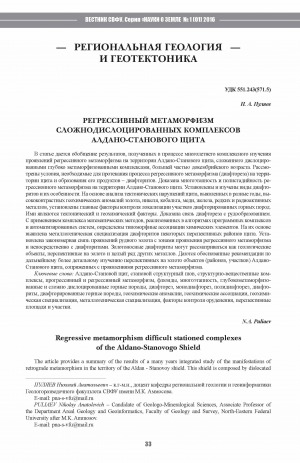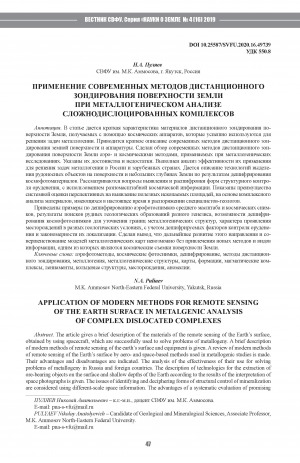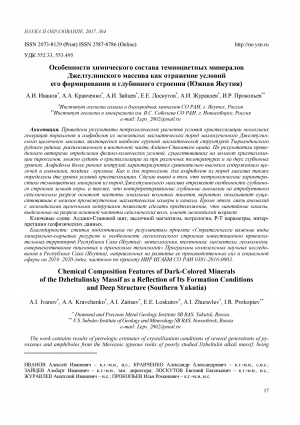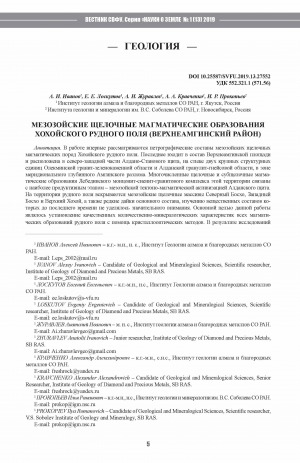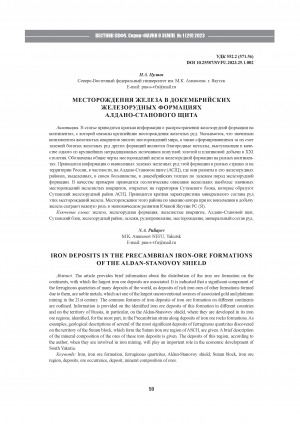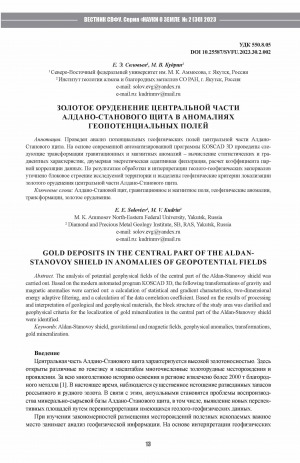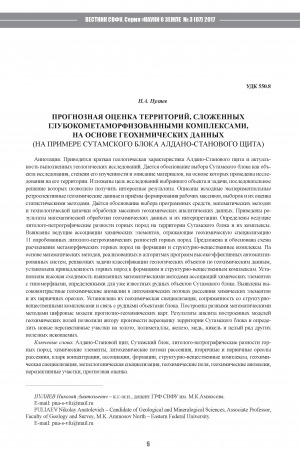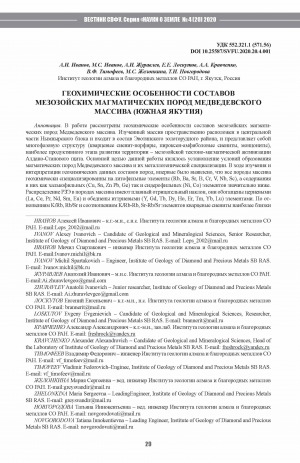В статье приводятся результаты изучения разными геологами геологического строения и перспективы рудоносности троговых комплексов, выполняющих такие структуры как троги, которые выявлены на разных этапах геологических исследований на территории западной части Алдано-Станового щита. Определены основные типы троговых комплексов и их разрезы. Установлен характер залегания осадочных (терригенных), вулканогенно-осадочных и метавулканических пород, выполняющих троги и образующие троговые комплексы. Описан характер соотношения этих пород в разрезе трогового комплекса в изученных трогах. Результаты изучения троговых комплексов показали, что в целом, для них характерна фациальная изменчивость, неоднородность метаморфизма и динамотермальная переработка пород (особенно в бортах трогов) с образованием милонитов и катаклазитов. Установлено, что троги приурочены к трем региональным системам разрывных нарушений. Внутри трогов отмечены как согласные, так и секущие разрывы, определяющие их блоковую тектонику. Приведены результаты определения геологического возраста пород трогового комплекса. Для троговых структур характерна рудная минерализация, связанная с процессами седиментации (железистые кварциты, медистые песчаники) и вулканогенного рудообразования (медноколчеданное и полиметаллическое оруденение), а также с процессами метаморфогенно-гидротермального перераспределения рудного вещества (стратиформное шеелитовое оруденение, рудоносные кварцевые жилы). Также установлено, что металлогения троговых структур изучена недостаточно. Тем не менее, большинство геологов, изучавших троговые комплексы в своих отчетах отмечали, что докембрийские троговые комплексы могут рассматриваться в качестве важных и перспективных в металлогеническом отношении геологических объектов западной части Алдано-Станового щита и заслуживают более углубленного изучения.
The article presents the results of the study by various geologists of the geological structure and prospects of ore-bearing trog complexes performing structures such as throgs, which were identi ed at di erent stages of geological research in the western part of theAldan-Stanovy shield. The main types of traction complexes and their sections were determined. The nature of the occurrence of sedimentary (terrigenous), volcanogenic- sedimentary and metavolcanic rocks performing throgs and forming throg complexes was established. The nature of the ratio of these rocks in the context of the trog complex in the studied trogs was described. The results of the study of trog complexes showed that they are generally characterized by facies variability, heterogeneity of metamorphism and dynamothermal processing of rocks (especially in the sides of trogs) with the formation of mylonites and cataclasites. It was established that the throgs are con ned to three regional systems of discontinuous disturbances. Both consonantal and secant discontinuities were marked inside the throgs, de ning their block tectonics. The results of determining the geological age of the rocks of the trogovoi complex were presented. The trog structures are characterized by ore mineralization associated with the processes of sedimentation (ferruginous quartzites, copper sandstones) and volcanogenic ore formation (copper-crusted and polymetallic mineralization), as well as with the processes of metamorphogenic-hydrothermal redistribution of ore matter (stratiform scheelite mineralization, ore-bearing quartz veins). It was also found that the metallogeny of the trog structures has not been studied su ciently. Nevertheless, the majority of geologists who studied the trogovye complexes noted in their reports that Precambrian trogovye complexes can be considered as important and metallogenically promising geological objects in the western part of the Aldan-Stanovy Shield and deserve more in-depth study.


